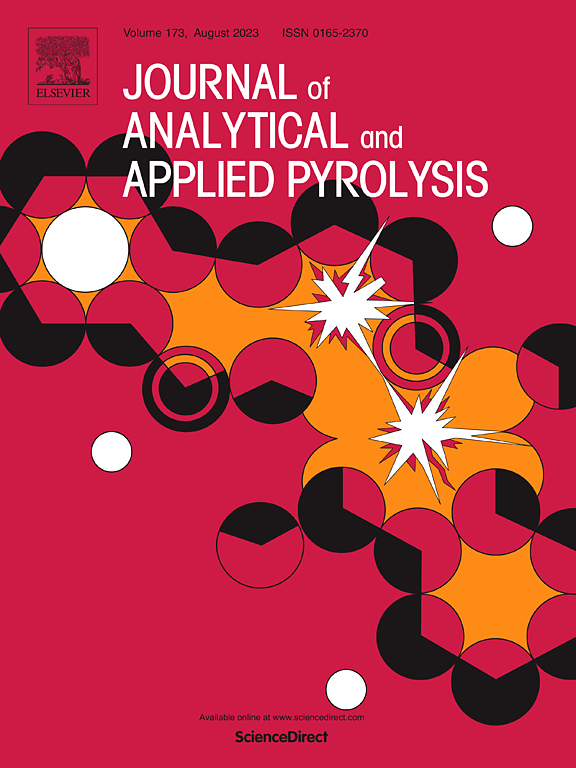Sulfur dioxide extrusion: Exploring the mechanism behind the formation of highly reactive 5-(trifluoromethyl)azafulvenium methide intermediates
IF 5.8
2区 化学
Q1 CHEMISTRY, ANALYTICAL
引用次数: 0
Abstract
Pyrolysis reactions of 2,2-dioxo-7-(trifluoromethyl)-1H,3H-pyrrolo[1,2-c]thiazoles are presented. Thermal reactions lead to the formation of noteworthy 5-membered heterocyclic products, whose yields were higher when FVPN2 was performed compared to other synthetic pyrolysis methods, such as microwave-induced pyrolysis (MWIP) or conventional heating (reflux). Trifluoromethyl-substituted pyrroles were obtained via rearrangements of trifluoromethyl-azafulvenium-methide intermediates. The experimental Arrhenius parameters of FVPN2 are presented for the very first time, and the results enable the proposal of three distinct mechanistic pathways for the SO2 extrusion process occurring at high temperatures. Quantum chemical calculations performed at the DFT level of theory provided a rational explanation for the observed results.
求助全文
约1分钟内获得全文
求助全文
来源期刊
CiteScore
9.10
自引率
11.70%
发文量
340
审稿时长
44 days
期刊介绍:
The Journal of Analytical and Applied Pyrolysis (JAAP) is devoted to the publication of papers dealing with innovative applications of pyrolysis processes, the characterization of products related to pyrolysis reactions, and investigations of reaction mechanism. To be considered by JAAP, a manuscript should present significant progress in these topics. The novelty must be satisfactorily argued in the cover letter. A manuscript with a cover letter to the editor not addressing the novelty is likely to be rejected without review.

 求助内容:
求助内容: 应助结果提醒方式:
应助结果提醒方式:


